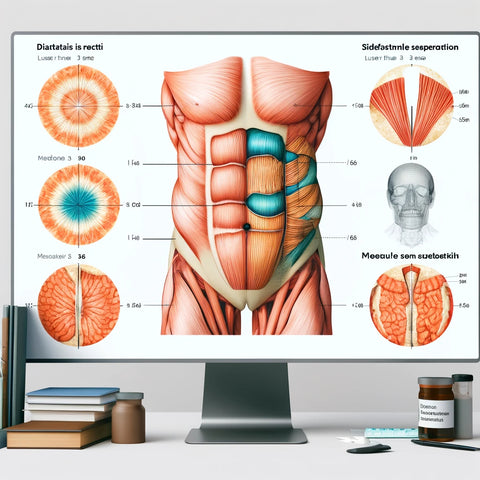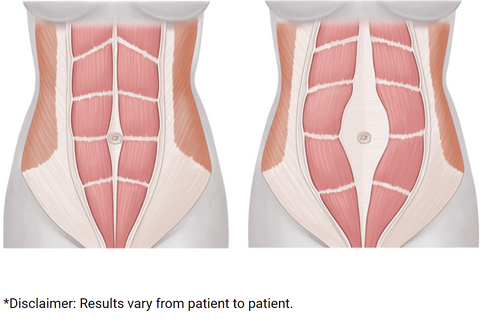When Do We Consider Diastasis Recti Severe?
The Severity of Diastasis Recti
How does one measure the severity of diastasis recti? A discern separation of less than 3 cm between the rectus muscles classifies as mild diastasis. Secondly, a 3–5 cm separation of the rectus muscles moderate diastasis. Finally, more than 5 cm checks out as severe diastasis. It is crucial to record any hernias a person has with other health problems and note any past surgeries.
When does Diastasis Recti Need Surgery?
Diastasis recti may require surgical intervention when the separation of the rectus muscles is at least 2 cm wide. Further regarding as the same as about two finger widths. It is crucial to determine whether the condition is significantly affecting your quality of life and daily functions.
What is Very Severe Diastasis Recti?
In the most extreme cases of diastasis recti, abdominal tissue may tear. Further leading to hernias where internal organs swell through the opening. In severe instances, this can result in a choked organ, cutting off its blood supply. That might also lead to infections and tissue death.
What does Severe Diastasis Recti Feel Like?
Severe diastasis recti can display a notable and visible separation of the Rectus Abdominis muscle. It often comes with flacid incline in the abdominal muscles. Pelvic-floor dysfunction (leading to urinary or bowel problems), and possibly low back, pelvic, or hip pain.
Is Diastasis Recti Surgery Worth It?
Surgery to repair Diastasis Recti Abdominis (DRA) can significantly improve physical well being. The decision, however, should be based on a detailed assessment of the severity and how much it impacts daily life.
Why is my Diastasis Recti Not Closing?
Lasting diastasis recti could be due to increased tension in the pelvic floor. Pressure management issues can worsen this condition. Because a raised pelvic floor tension forces a weaken tissue of a diastasis to bear the brunt during inhales.
Conclusion
Understanding the severity and hints of diastasis recti is crucial for appropriate treatment. Whether considering surgery or seeking out other options, it's important to consult with a healthcare professional for tailored advice. Remember, each case is unique and deserves attention fit to each person's needs.
Common Questions Asked
To help prevent Diastasis Recti during pregnancy, it's advisable to engage in exercises that strengthen the core muscles without overstraining them. Prenatal yoga and Pilates are excellent options as they focus on core stability and muscle elasticity. Additionally, maintaining good posture and avoiding sudden, jerky movements can help manage intra-abdominal pressure effectively.
Yes, Diastasis Recti can also affect men, often due to improper gym workouts, obesity, or sudden weight gain that puts excessive pressure on the abdominal wall. Men experiencing this condition may notice a bulging or sagging belly. Strengthening the core muscles through balanced exercise and managing body weight can help in reducing the separation.
Those with Diastasis Recti should avoid activities that cause the abdominal muscles to bulge out upon exertion. This includes lifting heavy objects, doing traditional sit-ups, or any exercise that involves intense twisting of the midsection. Opt instead for gentler, core-strengthening exercises recommended by healthcare professionals.
The recovery time for Diastasis Recti through physical therapy can vary depending on the severity of the condition and the individual’s consistency in following therapeutic exercises. Typically, noticeable improvements may be seen within 12 to 24 weeks of dedicated therapy.
However, complete recovery might take longer, and some may need additional interventions depending on their progress and specific circumstances.







